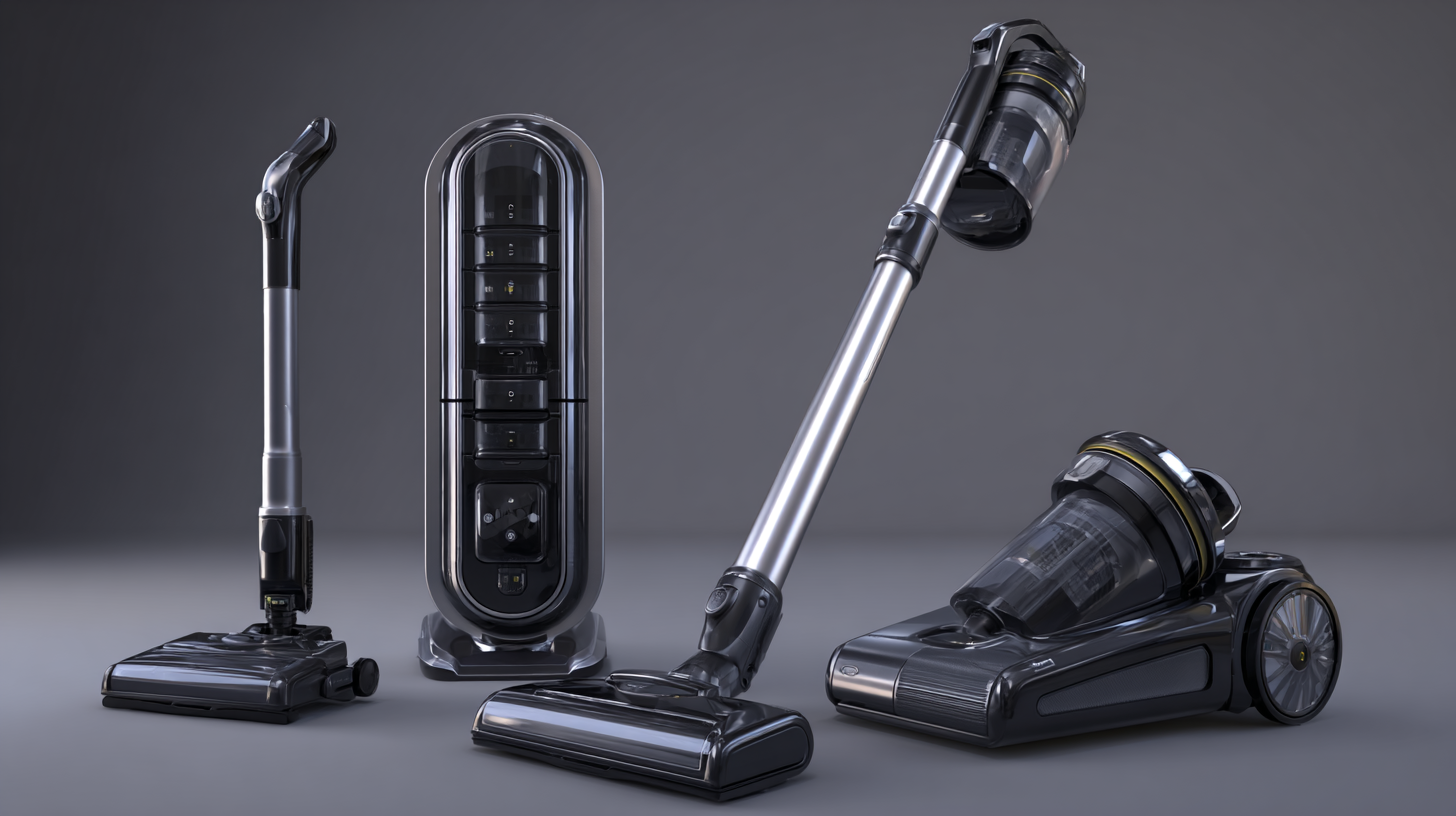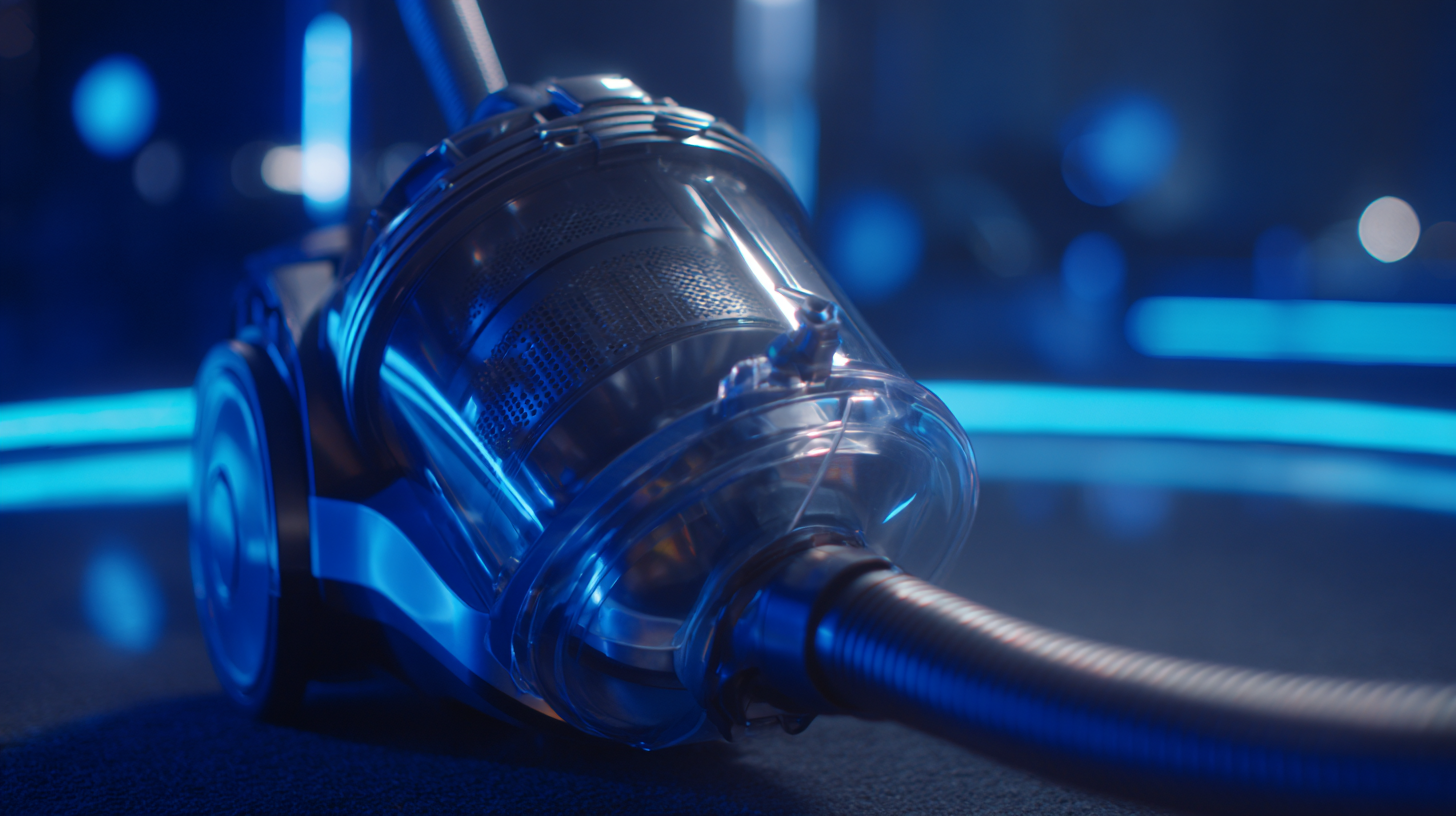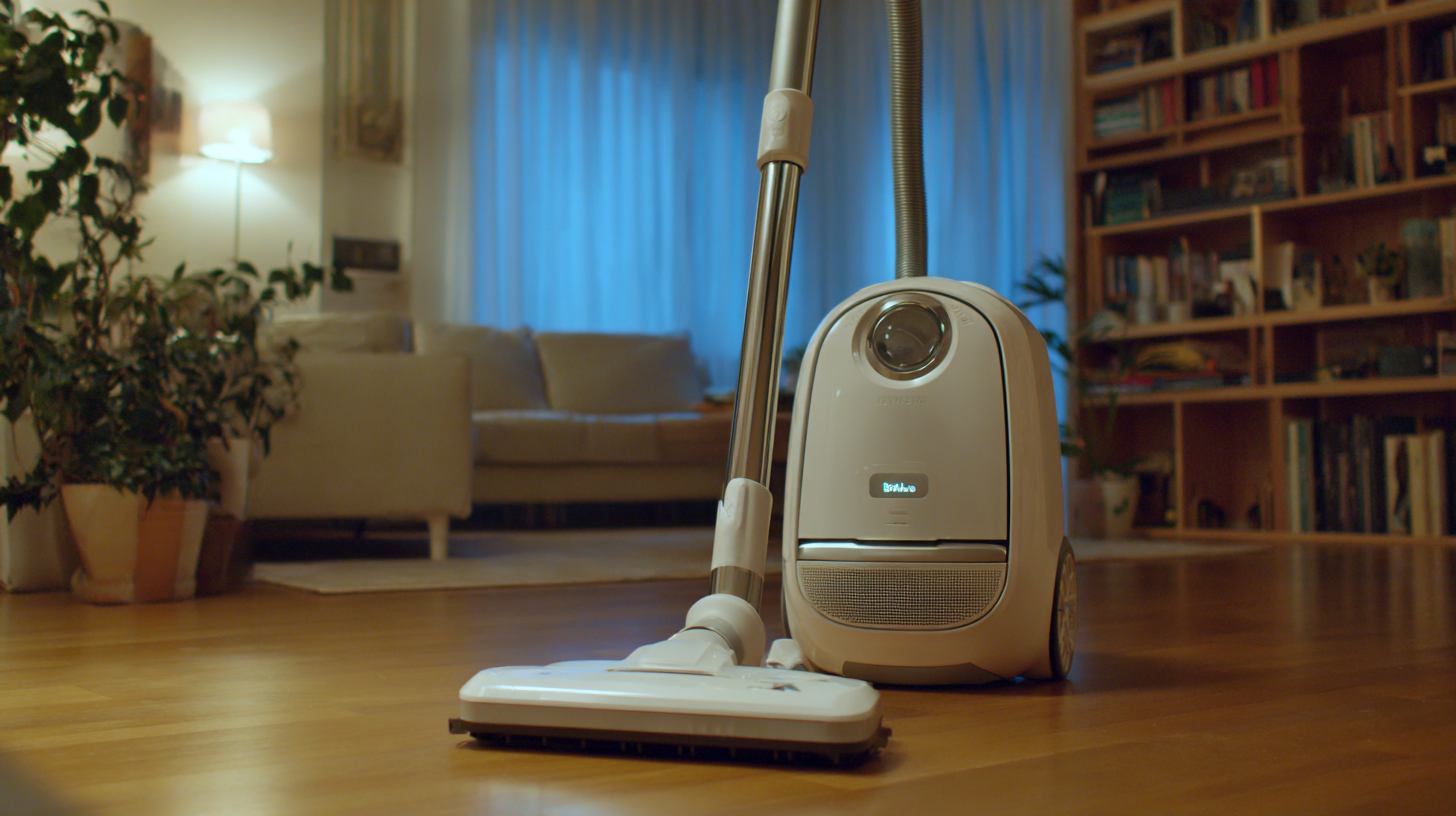In the rapidly evolving landscape of home appliances, vacuum cleaners remain a cornerstone for cleanliness and hygiene, with the global market projected to reach USD 17.2 billion by 2025, according to a report by Grand View Research. As technology advances, numerous innovations, including robotic and smart vacuum cleaners, are transforming consumer preferences and expectations. Furthermore, sustainability trends are driving the demand for eco-friendly alternatives, prompting manufacturers to explore new materials and designs.

This blog will delve into the latest technological developments expected to shape the vacuum cleaner industry in 2025, highlighting the various types of alternatives available that cater to diverse consumer needs. By understanding these trends and solutions, consumers can make informed decisions in selecting the vacuum cleaner that best suits their lifestyle while aligning with global standards.
The global vacuum cleaner market is set for remarkable expansion, with projections estimating growth from $44.24 billion in 2023 to $74.98 billion by 2030, reflecting a compound annual growth rate (CAGR) of 7.8%. As consumers increasingly seek innovative solutions that enhance their cleaning experience, manufacturers are responding with cutting-edge features that cater to a diverse range of needs. By incorporating smart technology, improved suction capabilities, and versatile designs, vacuum cleaners are not only becoming more effective but also more appealing on a global scale.

Among the noteworthy trends is the surge in demand for robotic vacuum cleaners, which is projected to grow from $11.97 billion in 2021 to $50.65 billion by 2028, boasting an impressive CAGR of 27.2%. This growth signals a shift in consumer preferences towards automation, convenience, and efficiency in household chores. Furthermore, advancements in various appliance technologies are ushering in smarter homes, where devices synergize to improve daily living. As companies innovate relentlessly, the future of vacuum cleaners appears promising, with appealing features paving the way for their global popularity.
The evolution of vacuum cleaner technology has been significantly influenced by Chinese manufacturing, shaping both product quality and innovation in the industry. According to a report by Market Research Future, the global vacuum cleaner market size was valued at approximately $10 billion in 2020 and is projected to grow at a CAGR of 4% from 2021 to 2027. Chinese manufacturers, known for their adaptability and cost-effective production methods, have emerged as key players in this space. Brands such as Xiaomi and Roborock are leveraging advanced technologies, including artificial intelligence and smart home integration, to redefine the user experience.
Furthermore, a study published by Statista reveals that around 30% of the world’s vacuum cleaners are produced in China. This dominance impacts not only pricing strategies but also the pace at which new features and technologies are introduced to the market. Many manufacturers are now prioritizing high-performance filtration systems and eco-friendly designs, aligning with consumer demand for better cleaning efficiency and sustainability. As manufacturers continue to invest in research and development, the influence of Chinese production will likely drive both competition and innovation in vacuum cleaner technology, appealing to a global market that prioritizes both functionality and quality.
When it comes to selecting the right vacuum cleaner, it’s essential to consider your specific cleaning needs and the type of environment you live in. For instance, if you have pets, you may require a model that excels in picking up pet hair and has strong suction capabilities. Additionally, families with children may benefit from a vacuum that can handle spills and crumbs effectively. With so many styles available, including upright, canister, and handheld options, understanding the differences will help you make an informed choice.
In recent years, handheld vacuums have gained popularity for their convenience and efficiency. These compact devices are especially useful for quick clean-ups and reaching tight spaces, making them a favorite among busy households. Moreover, advancements in technology have led to innovations such as lightweight designs and powerful batteries, enhancing their appeal. Ultimately, identifying your primary cleaning tasks and understanding the strengths of various vacuum models will guide you in selecting the ideal cleaner to suit your lifestyle.
| Cleaning Requirement | Ideal Type of Vacuum Cleaner | Key Features | Price Range (USD) |
|---|---|---|---|
| Pet Hair Removal | Upright Vacuum | Powerful suction, specialized pet hair attachments | $200 - $600 |
| Hardwood Floors | Canister Vacuum | Gentle on floors, adjustable suction | $150 - $400 |
| Allergy Control | HEPA Filtration Vacuum | HEPA filters, sealed systems | $250 - $700 |
| Carpets | Upright or Robot Vacuum | Deep cleaning capabilities, brushes for carpet lift | $100 - $800 |
| Compact Spaces | Stick Vacuum | Lightweight, easy storage | $80 - $300 |
In the quest to find the best vacuum cleaners that resonate with consumers across the globe, the significance of consumer reviews cannot be overstated. These firsthand accounts provide valuable insights into the performance, durability, and efficiency of various brands and models. Potential buyers often rely on the shared experiences of others to gauge whether a particular vacuum cleaner will meet their unique needs. By examining consumer feedback, people can identify trends regarding usability, maintenance, and overall satisfaction, allowing them to make informed purchasing decisions.

Moreover, consumer reviews not only help in spotlighting top global vacuum cleaner brands but also in highlighting any potential shortcomings. For instance, a brand that may excel in suction power might be criticized for its noise level or design flaws. This rich tapestry of positive and negative reviews creates a holistic picture that empowers consumers. Additionally, as more individuals from diverse backgrounds engage in sharing their experiences, the collective knowledge grows, fostering a community of informed shoppers who are capable of making smarter choices in their vacuum cleaner purchases. In an increasingly competitive market, understanding consumer sentiment through reviews becomes an essential tool for both shoppers and manufacturers alike.
The vacuum cleaner industry is witnessing a significant shift towards sustainable practices, driven by increasing awareness of environmental issues among consumers and manufacturers alike. Companies are now focusing on reducing their carbon footprint by adopting eco-friendly materials and improving energy efficiency in their products. For example, many brands have begun using recycled plastics and sustainable components in their designs, thereby minimizing waste and promoting a more circular economy.
Moreover, global trends indicate that consumers are seeking out appliances that not only perform well but also align with their values regarding sustainability. This trend has led to a surge in demand for energy-efficient models that consume less power while delivering high cleaning performance. Innovations such as battery-operated vacuum cleaners that utilize renewable energy sources are setting new standards in the market. As manufacturers continue to prioritize sustainable practices, the vacuum cleaner landscape is evolving, offering consumers a broader range of environmentally conscious options.